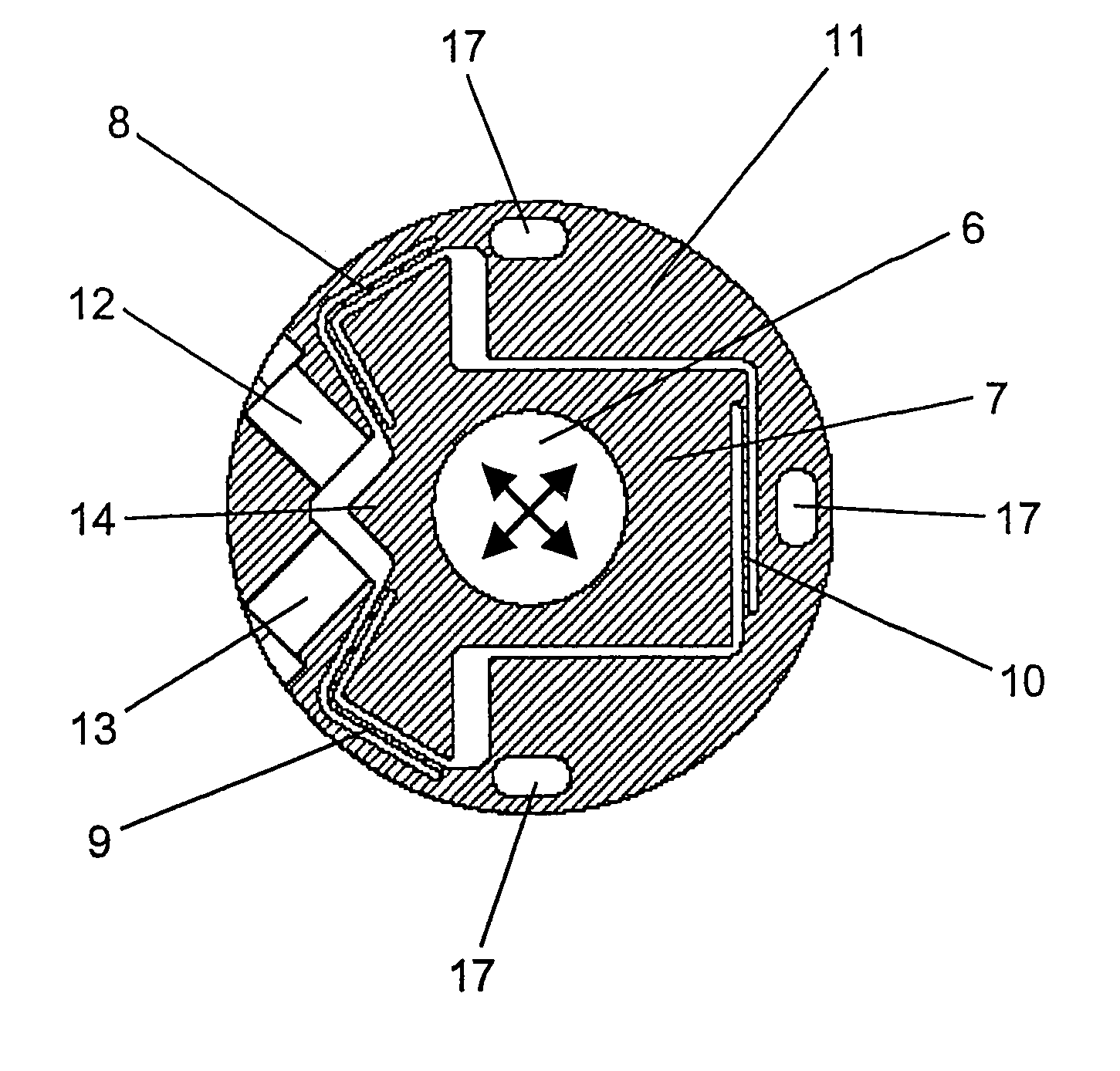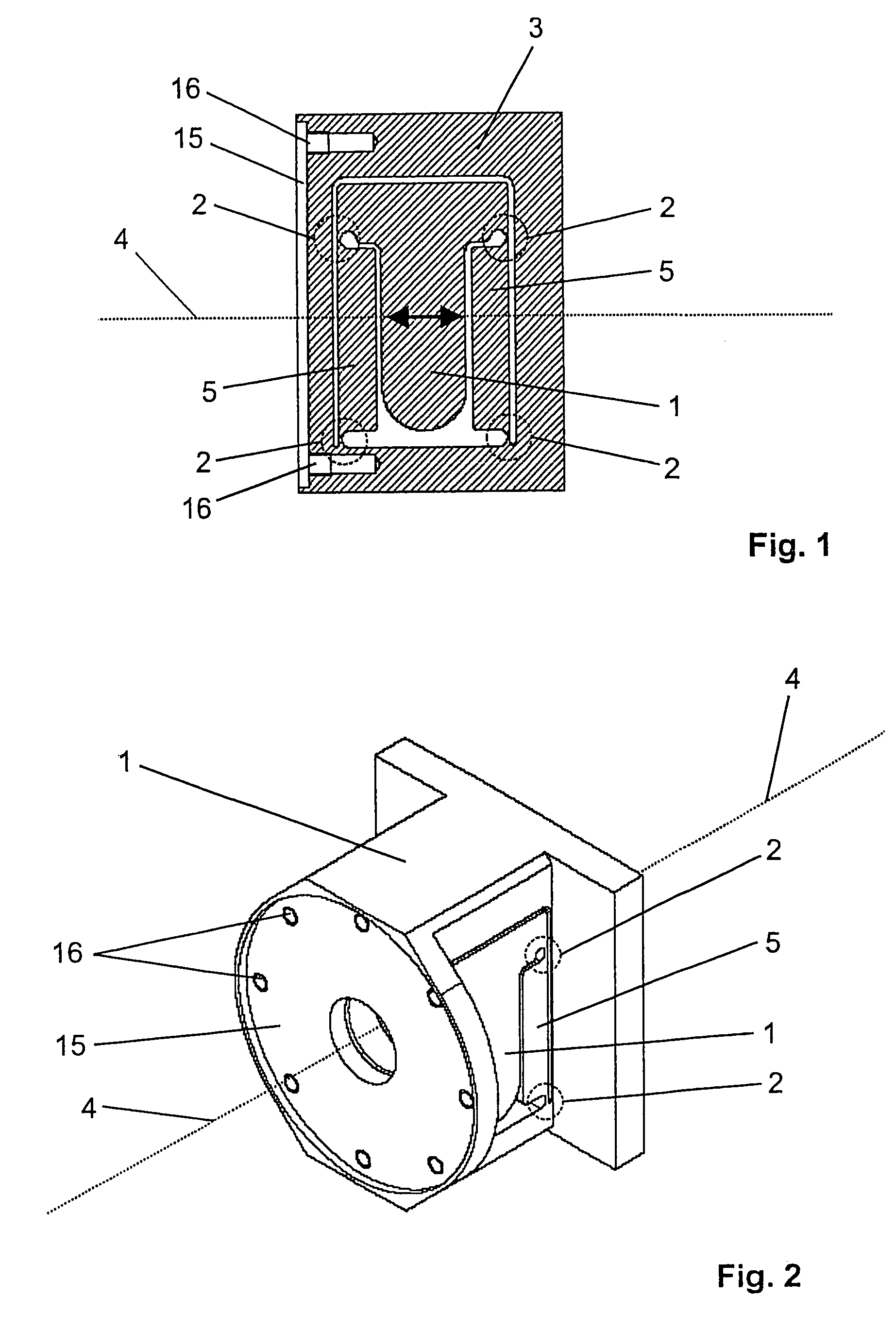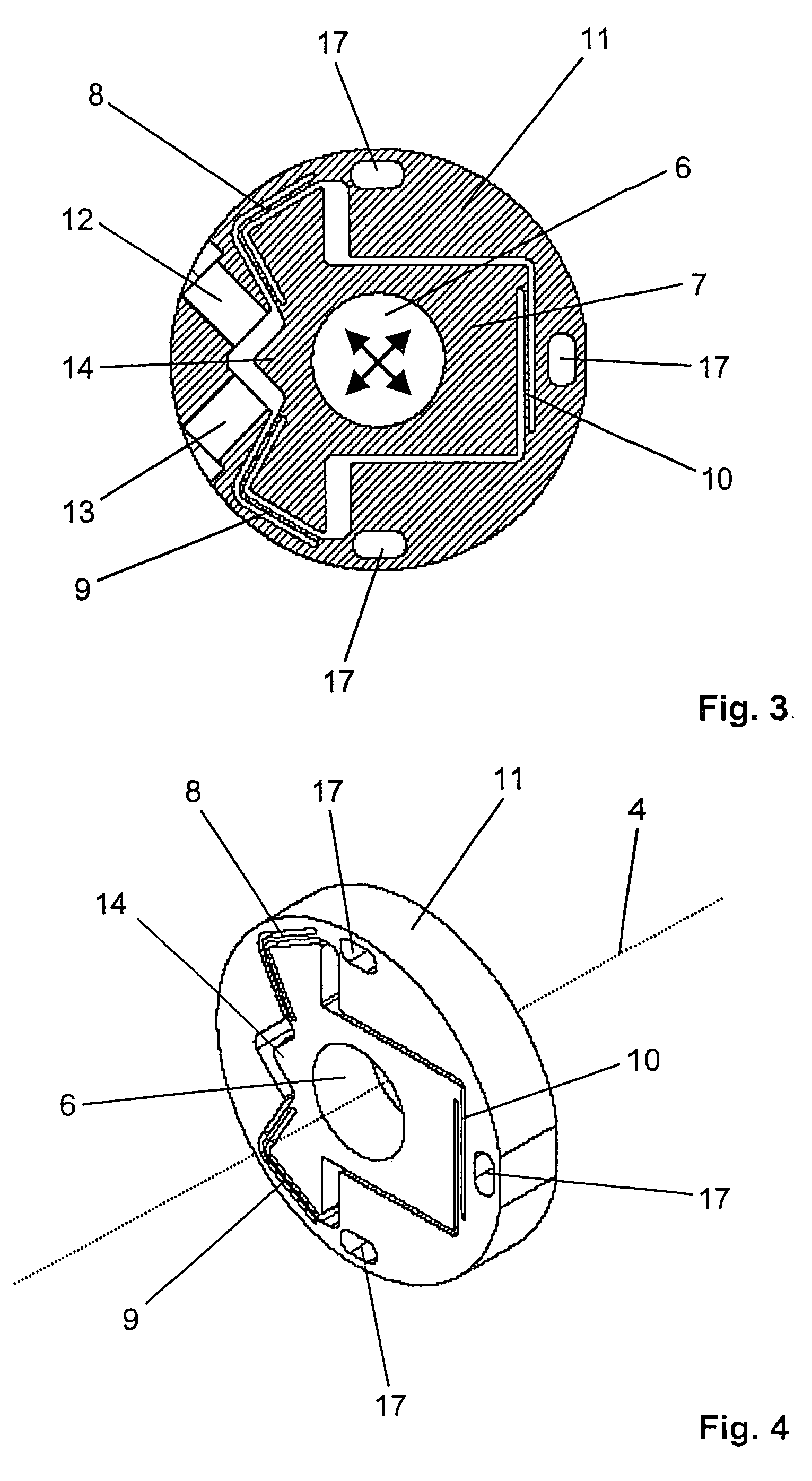Optical fiber coupler
a technology of optical fiber and coupler, applied in the field of optical fiber coupler, can solve the problems of reducing the efficiency of coupling by 20%, highest precision, and previously known fiber couplers are extremely expensive in their production, and achieves compact structure, high production efficiency, and long-term stability. the effect of precision and long-term stability
- Summary
- Abstract
- Description
- Claims
- Application Information
AI Technical Summary
Benefits of technology
Problems solved by technology
Method used
Image
Examples
Embodiment Construction
[0025]Turning now in detail to the drawings, FIGS. 1 and 2 show the element of a fiber coupler according to an embodiment of the invention that is provided for holding the focusing lens (not shown). The focusing lens is fixed in place in a pre-adjusted position on a lens holder 1.
[0026]Lens holder 1 is connected with a base body 3 by way of a total of four elastic monolithic or solid joints 2. Lens holder 1 is adjustable in linear manner in the axial direction, namely parallel to the optical axis 4. For this purpose, monolithic joints 2 have a clearly greater bending stiffness crosswise to optical axis 4 than parallel to it. In order to allow an essentially purely linear movement of the focusing lens, lens holder 1 is connected with base body 3 by way of the four monolithic joints 2 and two lever arms 5. In this connection, the two lever arms 5 are disposed in the manner of a parallelogram. This arrangement results in linear adjustability of the focusing lens, as indicated in FIG. 1...
PUM
 Login to View More
Login to View More Abstract
Description
Claims
Application Information
 Login to View More
Login to View More - R&D
- Intellectual Property
- Life Sciences
- Materials
- Tech Scout
- Unparalleled Data Quality
- Higher Quality Content
- 60% Fewer Hallucinations
Browse by: Latest US Patents, China's latest patents, Technical Efficacy Thesaurus, Application Domain, Technology Topic, Popular Technical Reports.
© 2025 PatSnap. All rights reserved.Legal|Privacy policy|Modern Slavery Act Transparency Statement|Sitemap|About US| Contact US: help@patsnap.com



